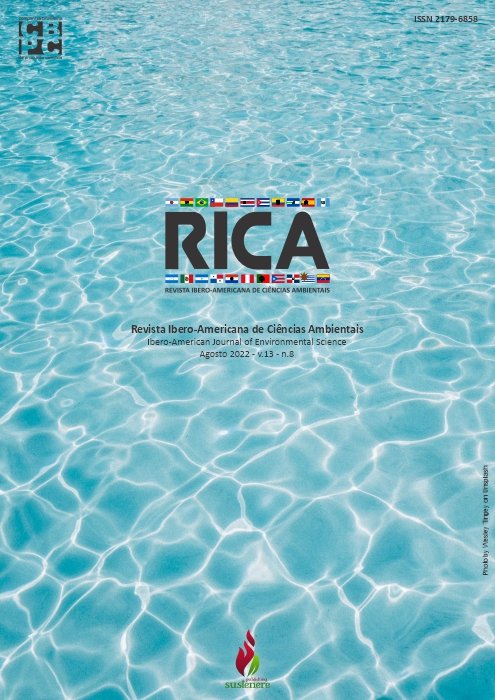Hemeroby and water quality index in the Piracicaba river basin (MG)
DOI:
https://doi.org/10.6008/CBPC2179-6858.2022.008.0015Keywords:
Landscape alteration, Turbidity, Thermotolerant coliforms.Abstract
Water resources can suffer big impacts due to human transformations, which cause changes in the quality and quantity of water in a hydrographic basin. Tools that assess the degree of change in the landscape, such as the definition of degrees of hemerobia, linked to water quality data can support planning and management actions in a basin. Thus, the aim of this article is to evaluate the degree of hemeroby in the Piracicaba river basin - mg and its relationship with the water quality index (WQI). The land use and cover map, the classification of the area according to the degrees of hemeroby, the calculation of the water quality index and the collection of quarterly data on the parameters used in the calculation of the WQI for the year 2020 were prepared. The results indicate the predominance of minimum (43%) and medium (32%) degrees of hemeroby in the basin, with punctual very high (2,7%) and maximum (1,2%) degrees, concentrated in the region of Vale do Aço and in the municipality of Itabira. The WQI ranged from good to medium, with values from 76 to 56. Among the parameters used to calculate the WQI, thermotolerant coliforms and turbidity were those with values above those allowed by law. the results indicate the influence of areas of medium hemeroby, occupied by pastures, agricultural and non-vegetated areas, on the high turbidity levels of the basin; and the influence of areas with very high hemeroby, represented by urban infrastructure, on the high levels of thermotolerant coliforms.
Downloads
Downloads
Published
Issue
Section
License
Copyright (c) 2023 Ibero-American Journal of Environmental Sciences

This work is licensed under a Creative Commons Attribution-NonCommercial-NoDerivatives 4.0 International License.
The CBPC - Companhia Brasileira de Produção Científica (Brazil CNPJ: 11.221.422/0001-03) the material rights of the published works. The rights relate to the publication of the work anywhere in the world, including rights to renewals, expansions and dissemination of the contribution, as well as other subsidiary rights. All electronically published works may subsequently be published in printed collections under the coordination of this company and / or its partners. The authors preserve the copyright, but are not allowed to publish the contribution in another medium, printed or digital, in Portuguese or in translation.









